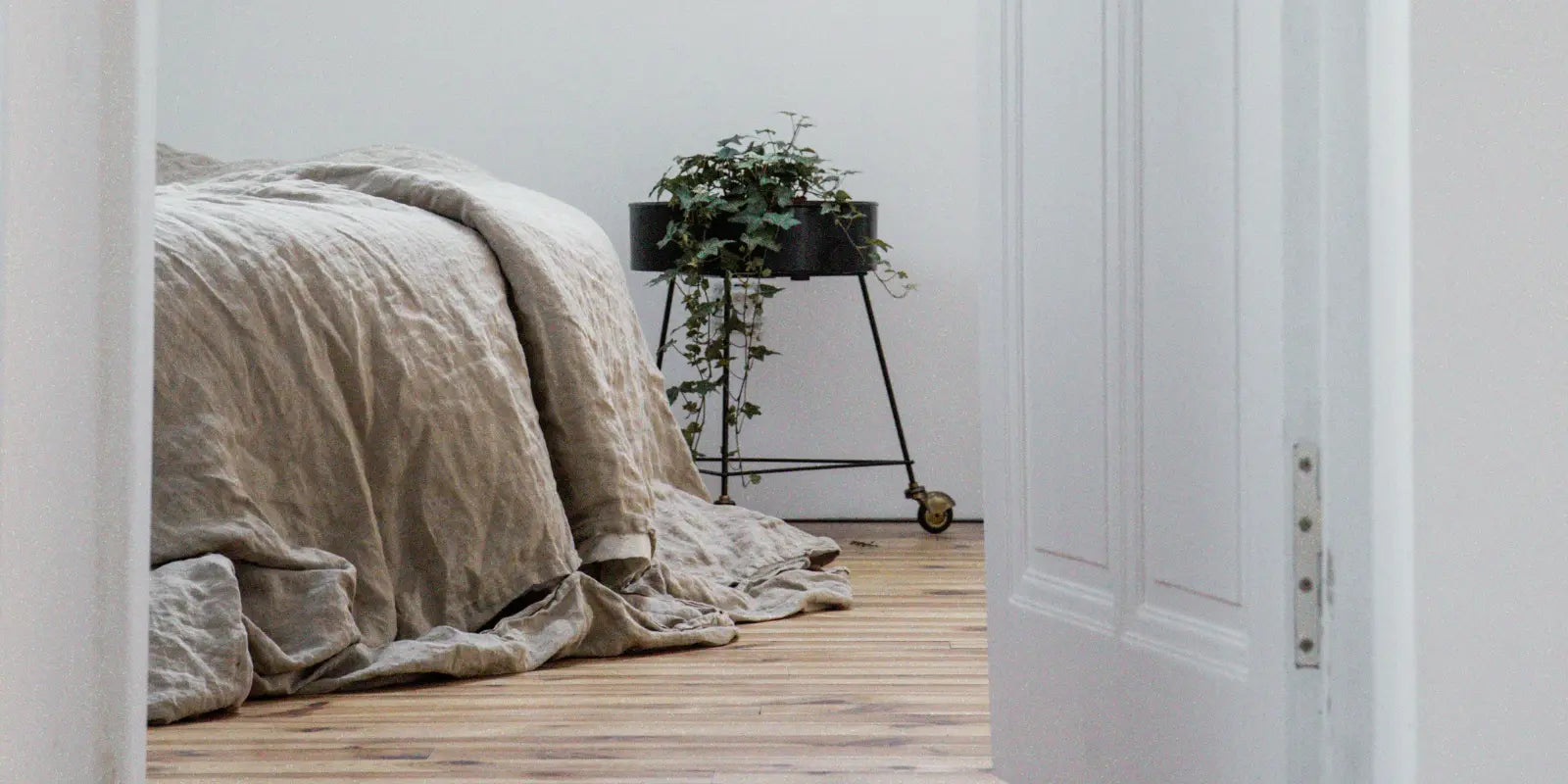Your Cart is Empty
Menu

Wool Bedding for Year-Round Comfort
June 04, 2019 2 min read
If you’re new to the concept of wool bedding, you might be a little skeptical about how comfortable it’ll be for sleeping. Maybe you think of wool in terms of those thick socks and sweaters you bring out of storage at the first sign of frost and pack away again in the spring. Or maybe you have recollections of itchy, heavy wool blankets. With those frames of reference, you could be thinking pillows, comforters, and mattresses made with wool would be hot and uncomfortable. We can assure you the exact opposite is true.

The Science of Year-Round Wool
Wool does a terrific job of keeping you warm in the winter and is a superstar fiber when it comes to moisture wicking. It’s why wool is our go-to option when it’s time to bundle up for colder weather. The basic science is simple: wool fibers absorb moisture and release it into the air.
When you’re wearing wool clothing or sleeping with wool bedding in the colder months, this process pulls perspiration from the skin and efficiently disperses it before you even feel the sweat. The evaporative properties of wool allow it to absorb up to a third of its weight in moisture without ever feeling damp, and the natural crimp of the fibers creates tiny pockets that trap warm air for an insulating effect. You stay warm and dry surrounded by a consistent, low-humidity microclimate.
These same processes are at work in warm weather, producing a cooling effect right when you need it. Those tiny pockets are just as efficient at trapping cool air and keeping you insulated from the warming outside air. The wool continues to pull moisture away from your body, keeping you comfortable and dry as the temperatures climb. These qualities also make wool the perfect choice for partner sleeping. People overheat and perspire at different rates. Wool maintains the microclimate of each individual at their optimum comfort level.

Sleeping With Wool
An uninterrupted good night’s rest is essential to health and well-being. The better you sleep, the more productive your waking hours will be. Research has shown that wool bedding (and wool sleepwear) results in a deeper, more restful sleep. Study participants slept more comfortably, tossed and turned less, and woke less frequently during the night. The temperature-regulating, moisture-wicking properties of wool combine to create the ideal sleep environment.
This is especially good news when it comes to your little ones. Research has also found that infants sleep more peacefully and less fitfully on wool bedding, and underweight newborns sleeping on wool thrive at a higher rate than those sleeping on cotton. In addition, preschoolers sleeping on wool are less likely to experience sleep problems than children sleeping on synthetic bedding. (See link below for details.)

The lightweight wool we use in all our bedding products is an outstanding, breathable insulator. The natural miracle of its fibers keeps you comfortable season after season. Not too hot, not too cold. Just right, all year round.
Wool and Sleep, International Wool Textile Organisation
Leave a comment
Comments will be approved before showing up.
Also in Blog

10 Eco-Friendly Home Habits for 2025
March 10, 2025 5 min read
Whether it’s conserving more of the resources we use, minimizing the amount of waste we generate, or preserving our vital ecosystems, there are numerous ways to promote the well-being of ourselves and the planet we call home. With that in mind, let’s explore 10 ways to live a more eco-friendly lifestyle at home in 2025!

The Life Cycle of Our Wool: From Farm to Bedroom
January 15, 2025 4 min read
At Holy Lamb Organics, we are committed to transparency and sustainability. Our Premium Eco Wool and Certified Organic Wool products are a testament to this, crafted with ethically sourced wool that has been handled with care at every step of the journey!

How to Create a Cozy Bedroom Ambiance
November 14, 2024 2 min read
As temperatures drop, creating a cozy sleep environment becomes essential for comfort and well-being. The winter months can make your bedroom feel chilly and uninviting, but with a few intentional changes, you can turn it into a sanctuary for rest and rejuvenation!
Read MoreSubscribe
Sign up to get the latest on sales, new releases and more …

 Find a Retailer
Find a Retailer